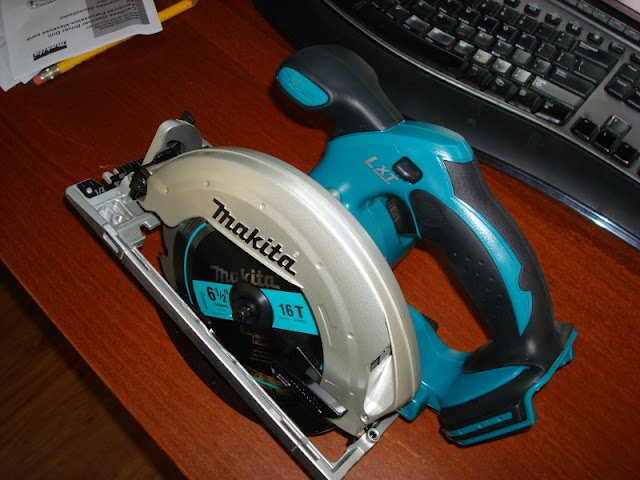Our goal for this house is to make memorable spaces on a budget that wouldn't look out of place if you saw them in Houzz or magazines. To do that we've concentrated on a couple tactics - we change the floor plan in ways that add drama and excitement and we use materials that are uncommon but look great and can be made by anyone if they're willing to get their hands dirty.
For our hall bath there simply wasn't any room to do much with revising the floor plan - the bath is flanked by an already too small laundry room on one side, a hallway on another and the master bath on the other. We were stuck with the existing footage. We decided the tub needed to go away and we'd replace it with a shower, the original 1960's tub looked terrible and neither of us was ever going to soak in a 5' basic tub even if it weren't a complete piece of sh#t. The decision was made to go with a shower instead. Now the thing about showers that I dislike are the glass doors that usually get installed with them. Unless you spend big bucks on a frameless enclosure with 3/8" glass and European hinges these things look cheap and cleaning the glass after every shower is tiresome. So in this case we designed a shower with no door. There's a tiled wall separating most of the shower area from the bathroom with a large enough opening to walk through. The wall is low enough (6 feet tall) that the room doesn't feel cramped from it and it's also low enough that light from the window still lights up the bath. And surprisingly little water that splashes out of the open doorway.
 |
| New shower and separating wall |
As you can see in the picture (sorry about the crappy camera/phone shot) that we have a window in the shower. Normally I avoid windows in wet areas like this because water is your home's worst enemy and will always eventually win but the day of reckoning can usually be delayed with good waterproofing practices and keeping the window up high so it avoids getting direct blasts of water.
The wall is covered with slate on the dry side that matches the wainscot around the room. The slate was the major cost for this bath - if memory serves we spent $600 for enough slate for the wall, wainscot, shower floor and bathroom floor. On the inside of the shower we used a 2x4 subway tile from Home Depot that cost under $2 per sf - it ran just under $200 for the tile for the shower. At the curb and transition between the shower tile and the slate wainscot I used concrete pieces (5/8" thick) that I poured in the garage. The concrete adds a custom look and was really inexpensive. I probably spent $50 on materials.
We splurged on the toilet a bit - we got a Delta Riosa ($270 from Home Depot) which has a low volume flush that actually works. Believe me on this - being in the building industry for 20 years I have hated low flush toilets. They were a huge problem simply because they always get clogged. But this new toilet is has been a revelation - not only does it use a paltry 1.28 gallons per flush (great if you're on a septic system) but the darn thing never gets clogged. Simply a terrific product. What we really liked about this model is that the side skirt goes all the way to the floor - there's no flat area that's constantly collecting dirt and grime.
For the vanity we wanted a piece that was ope underneath, a cabinet will give you concealed storage but it makes the room appear smaller which we didn't want. Beth found an old steel work table some welder had cobbled together with peeling and rusted legs to which I added a gray concrete top that I ground to expose the aggregate. For the sink we used a stone vessel sink that a builder friend gave to us - the industrial look of the table and concrete complement the polished green stone of the sink quite well. A metal basket on the floor under the sink provides storage for TP and a recessed medicine cabinet is just enough for other essentials. Being a hall bath the need for storage isn't as great as the master bath will need. To make the room appear larger I made a mirror that runs the full length of the vanity and toilet that matches the style of the door trim.
 |
| Welder's table with concrete top and stone vessel sink |
Lighting is provided from a couple of sources - LED recessed cans and a pair of pendant lights at opposite ends of the mirror. Ventilation is handles by an ultra-quiet bath fan that's on a timer - just hit the switch and the fan runs for a pre-determined length of time and then shuts itself off. It's important to ventilate your bath (gotta minimize the effects of all that water) and an electronic timer is a great way to ensure the fan gets used. I also ran a heating run into the bath, something that was missing from when the house was built.
The bathroom is still a small 5'x8' space but by using some imagination on materials and configuring the shower to be quite useful it's no longer a room I dread to enter.
Cost Recap:
Slate - $600
Subway Tile - $200
Accent Tile - $150
Backerboard/Thinset/Grout - $150
Concrete Trim and Counter - $50
Shower Waterproofing (Schluter System) - $400
Toilet - $270
Custom Mirror - $90
Drywall - $50
Electrical/Lighting - $200
Plumbing - $200
Medicine Cabinet - $30
Paint - $30
Welder's Table - $100
HVAC - $75
Window - $175
Framing - $75
Total - $2815

















